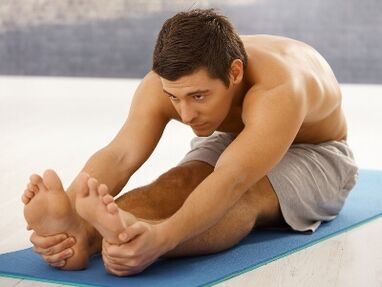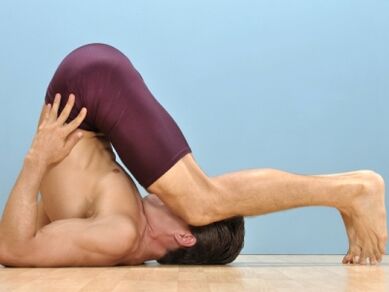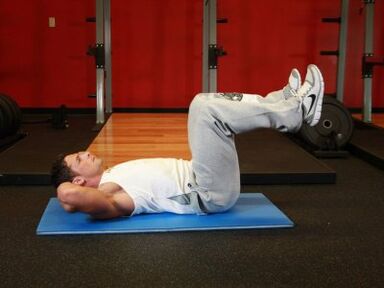
Prostatitis and benign prostatic hyperplasia are quite common diseases in older men.
The main symptom of prostate adenoma is difficulty urinating due to urethral compression.
In the framework of complex treatment of these diseases with medicinal, folk remedies, such as the use of dead bees in the case of prostate adenoma and surgical methods, as well as physiotherapy is recommended for the prevention of congestion and inflammation.
Special exercises for prostatitis and prostate adenoma should be performed for a sufficiently long period of time. Their purpose is to strengthen the muscles of the pelvis, perineum, lower extremities, the general strengthening of the body.
In addition, recommended practices for the treatment of prostatitis and prostate adenoma are presented to men after prostate gland surgery to prevent complications. In this case, they should be performed gently and with the patient's well-being in mind.
Physiotherapy for prostate adenoma: major complexes of physical exercises

Physiotherapy for prostate adenoma as well as massage improves blood circulation in the pelvic organs.
This can stop the development of the pathological process, reduce the growth rate of the benign tumor.
The practice of prostate adenoma includes static and dynamic exercises.
General strengthening exercises such as walking, running, cycling are called dynamic exercises. You may also want to do exercises like squatting, walking on the buttocks, rolling on the ball, exercises with lifting and lifting the legs, or lifting the pool while lying down.
Static exercises include standing positions with prolonged tension in a given muscle group.
It is useful to note
Strengthening the back and abdominal muscles is essential. To do this, the exercises are performed in a supine position, side, abdomen, twisting and supine supports. One effective exercise is to recline the bike in a reclining position to practice - with a raised pool.
All kinds of lifting and tilting, the rotating movement of the pool is useful. There are special sets of exercises that target the muscle group of the perineum.
The most famous and effective practice for prostate adenoma is the Kegel complex, which was prepared by a gynecologist for women and modified for men. His main exercises are standing and lying down and consist of training the muscles of the anus and perineum to prevent congestion in the perineum and pelvis.
The complex should be performed in the morning, after hygienic procedures and in the evening. It is recommended to perform prenatal exercises with prostate adenoma 2-3 hours before bedtime.
note
Prostate adenoma practice should be performed with the patient's well-being in mind, should not be overstretched and progressed, the complexity of the practice should necessarily take into account the patient's age and consult with the treating physician.
A properly selected series of postoperative prostate surgeries can be a significant help in the postoperative recovery period. The practice should be regular.
The series of exercises itself does not take much time, but its regular use has a good effect on the general condition of the male body and the blood circulation of the pelvic organs, reduces the severity of congestion and edema.
In addition, strengthening the abdominal and perineum muscles will have a positive effect on the urination process and will be an excellent prevention of prostate adenoma in the future.
Important
They should also be reminded of moderation in performing the exercises, they should cause joy and mild fatigue, but they should not be accompanied by painful feelings and should not be done with violence.
Therapeutic gymnastics for prostate adenoma

The gymnastics recommended for prostate adenoma is performed not only in cases of benign prostate enlargement, but may also be useful in patients who have undergone surgery for chronic prostatitis due to prostate cancer.
Physiotherapy combined with drug therapy can help reduce edema and congestion in the pelvis and, accordingly, reduce urethral obstruction and improve urine output. Therapeutic gymnastics or gymnastics for prostate adenoma are performed under the supervision of a specialist, in groups, often in health care facilities, and consist of three stages.
In the first stage, they perform general physical activity, including aerobic exercise, running, jumping, and warming up.
In the second stage, special exercises are performed to strengthen the muscles that contribute to emptying the back, abdominal muscles, perineal region, and bladder. Various exercises are also performed to reduce congestion in the pelvic organs.
In the third stage, stretching and relaxation of the muscles loaded during training can be achieved.
note
This exercise should be performed regularly and over a long period of time to achieve a stable effect. The technique of physiotherapy practices must necessarily be included in a complex of therapeutic interventions, including medication, physiotherapy, and surgery if necessary.
The proliferation of prostate glandular tissue is an age-related disease and its course is highly dependent on the health and safety of the body.
Adherence to the rules of a healthy lifestyle, regular exercise, proper nutrition and diet, avoidance of bad habits greatly affect the quality of life, positively affect both the development and course of the disease.
The habit of maintaining physical activity and using available exercises allows the long-term preservation of organ and system functions even in old age.
























